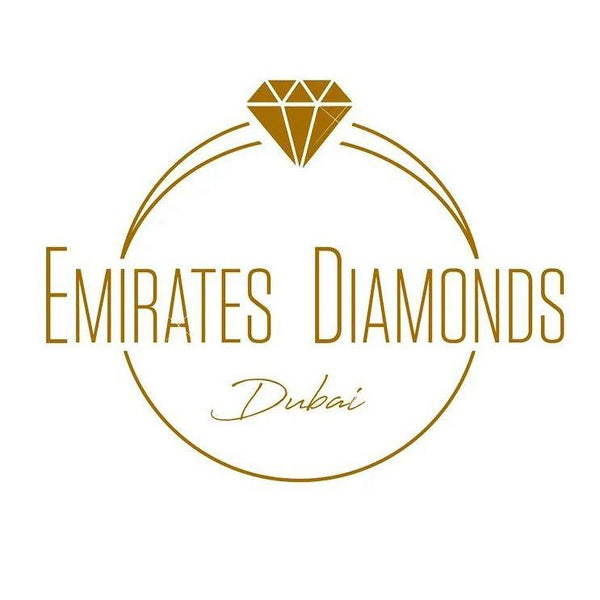Metal Education
Gemstone and diamond jewelry can be paired with a variety of precious metals. The metal you choose can depend on your preference in durability, look and cost. Factors that set different types of metals apart are also the luster, weight and color of the metal. Emirates crafts jewelry using gold, and platinum. We are also committed to using eco-friendly sources of metal. These are among the most durable and visually appealing metals, and are most commonly used in crafting jewelry. These metals are classified as precious as they are more rare and expensive than other commonly used metals.
– GOLD :
There are various grades of gold purity, determined by the ratio of their alloy composition and rated by a karat system. Typical karat purities range from 10 karats to 24 karats (pure gold), with a wide variation of usage from country to country. In the United States, the most popular composition is 18 karat gold. Gold has an extraordinary heritage with unique qualities. As an enduring element found naturally in a distinct yellow color, gold is resistant to rust, tarnish, and corrosion. Although gold is very strong, it’s also the most malleable of all precious metals.
Below are some of the most common gold densities, along with the characteristics and pure gold content of each:
24 Karat Gold:
In its purest form, the metal is comprised of 100% gold with virtually no alloy metals. Pure gold is extremely soft and pliable, which is why it’s often mixed with other metals, such as copper and silver, to forge jewelry.
22 Karat Gold:
This level of gold is 91.7% pure which is still too soft to make jewelry and not as durable as 18K or 14K.
18 Karat Gold:
This alloy consists of 75% gold and 25% alloy metals. 18 karat gold has been found to be the perfect balance between gold purity and strength. Brilliance offers a variety of exquisite 18 karat gold jewelry.
14 Karat Gold:
14 karat gold is 58.3% pure gold; the remainder is comprised of alloy metals. Any gold purity less than 14 karat gold is not recommended for high quality jewelry.
10 Karat Gold:
This tier of the metal consists of 41.7% gold. This is the minimum purity that can still be considered gold in the United States and is not used for high quality jewelry.
– PLATINUM :
A precious metal, platinum is more expensive and rare than gold. Platinum has a silvery white hue and is known for durability. Platinum is often chosen for its ability to resist abrasion or scratches. This fine metal pairs well with any gemstone or diamond. It is best used for jewelry like rings and wedding bands and pieces that will be worn regularly. Emirates crafts platinum jewelry with high quality platinum. Most popular metal for engagement rings and wedding bands, platinum’s naturally white sheen will never fade or change color, and accentuates the sparkle and brilliance of a diamond. Platinum will last forever, making it the ultimate symbol for true, enduring, and everlasting love.
Platinum Purity :
Considered among the most pure and precious metals used in modern-day jewelry making, platinum has become synonymous with luxury and longevity. Because of its hardness and durability, pure platinum is often mixed with other metals to make it more malleable. The most common alloy metals paired with platinum are copper, palladium, rhodium, iridium, and titanium. Although some alloys may be billed as platinum by jewelry sellers, there are stringent requirements for what constitutes a ‘pure’ platinum piece. Only metals marked with a 950 or 900 purity designation are considered high-grade platinum. Alloys containing a lower ratio are often used to make jewelry, but these pieces don’t impart the same high standards of quality, longevity, or beauty. We use only the purest platinum alloys to craft our fine jewelry.
950 Platinum :
Pieces marked with a 950 purity are a blend of 95% platinum and 5% alloy metals (usually ruthenium , copper, cobalt, iridium, rhodium, or palladium).
900 Platinum :
Pieces marked with a 900 purity consist of 90% platinum and 10% alloy metals (usually ruthenium or iridium).
– SILVER :
Valued as a precious metal since ancient times, silver is used to craft many fine jewelry pieces on the market today. Once considered more precious than gold, pure silver is a soft metal with a white, lustrous hue. In addition to jewelry making, silver is used in a wide variety of industrial and decorative applications, including fine serving ware, flatware, decorative accents, personalized gifts, coins, and electrical components. Silver is a by-product formed during the mining of other metals, including gold, lead, copper, and zinc. The silver jewellery and accessories available at Blue Nile are made of beautiful sterling silver. For our collection, we have chosen classic designs created by some of the finest craftsmen. This guide will help you learn to identify quality in silver jewellery and accessories.
Silver Purity :
Due to its high level of inherent softness, pure silver is actually too malleable to be used alone in jewelry making and it is easily dented or scratched when exposed to daily wear and tear. Instead, silver is typically mixed with other alloy metals to give it strength. Copper is the most commonly chosen companion; its durable resilience lends stability and longevity to sterling silver pieces. At Emirates, each of our sterling silver pieces boasts a purity of .925, which denotes a silver content of 92.5% and an alloy composition of 7.5%. This is the standard that determines whether a jewelry piece can be designated as “sterling” or pure silver–anything less than 92.5% does not qualify.
